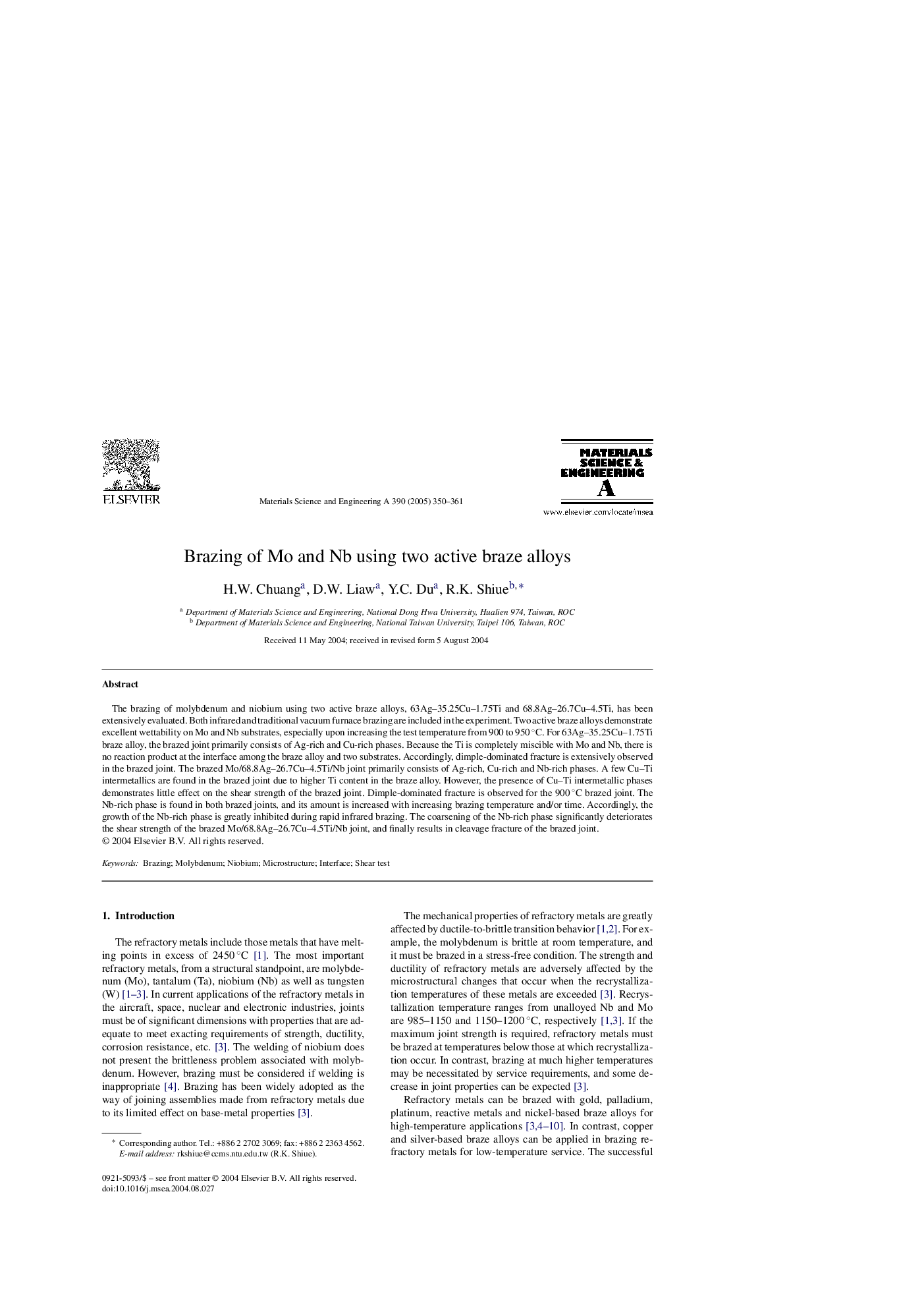| Article ID | Journal | Published Year | Pages | File Type |
|---|---|---|---|---|
| 9796690 | Materials Science and Engineering: A | 2005 | 12 Pages |
Abstract
The brazing of molybdenum and niobium using two active braze alloys, 63Ag-35.25Cu-1.75Ti and 68.8Ag-26.7Cu-4.5Ti, has been extensively evaluated. Both infrared and traditional vacuum furnace brazing are included in the experiment. Two active braze alloys demonstrate excellent wettability on Mo and Nb substrates, especially upon increasing the test temperature from 900 to 950 °C. For 63Ag-35.25Cu-1.75Ti braze alloy, the brazed joint primarily consists of Ag-rich and Cu-rich phases. Because the Ti is completely miscible with Mo and Nb, there is no reaction product at the interface among the braze alloy and two substrates. Accordingly, dimple-dominated fracture is extensively observed in the brazed joint. The brazed Mo/68.8Ag-26.7Cu-4.5Ti/Nb joint primarily consists of Ag-rich, Cu-rich and Nb-rich phases. A few Cu-Ti intermetallics are found in the brazed joint due to higher Ti content in the braze alloy. However, the presence of Cu-Ti intermetallic phases demonstrates little effect on the shear strength of the brazed joint. Dimple-dominated fracture is observed for the 900 °C brazed joint. The Nb-rich phase is found in both brazed joints, and its amount is increased with increasing brazing temperature and/or time. Accordingly, the growth of the Nb-rich phase is greatly inhibited during rapid infrared brazing. The coarsening of the Nb-rich phase significantly deteriorates the shear strength of the brazed Mo/68.8Ag-26.7Cu-4.5Ti/Nb joint, and finally results in cleavage fracture of the brazed joint.
Related Topics
Physical Sciences and Engineering
Materials Science
Materials Science (General)
Authors
H.W. Chuang, D.W. Liaw, Y.C. Du, R.K. Shiue,
